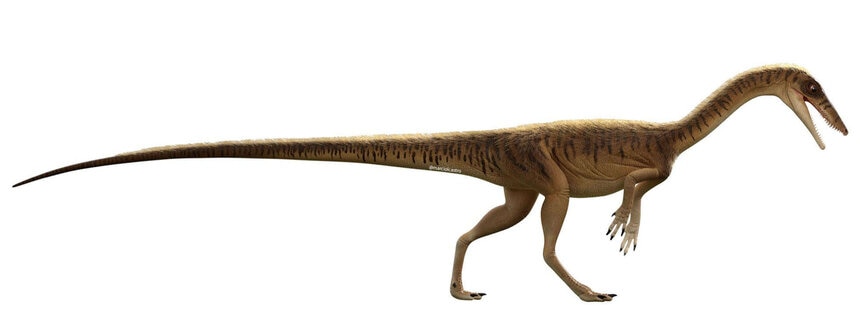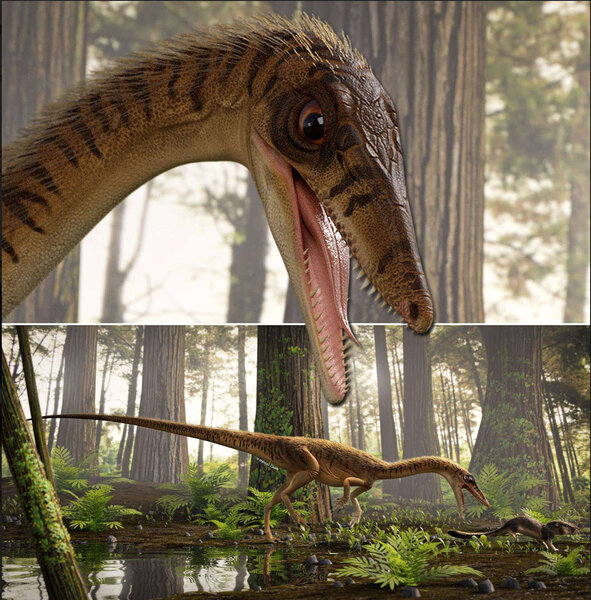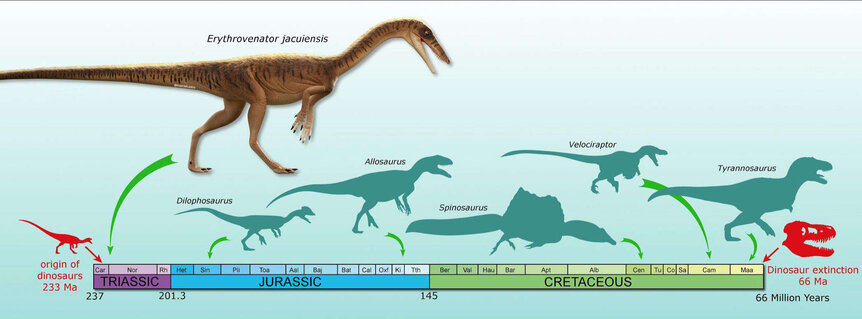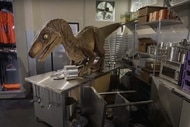Create a free profile to get unlimited access to exclusive videos, sweepstakes, and more!
Newly discovered dinosaur was one of earliest vicious theropods, so T. Rex better bow down
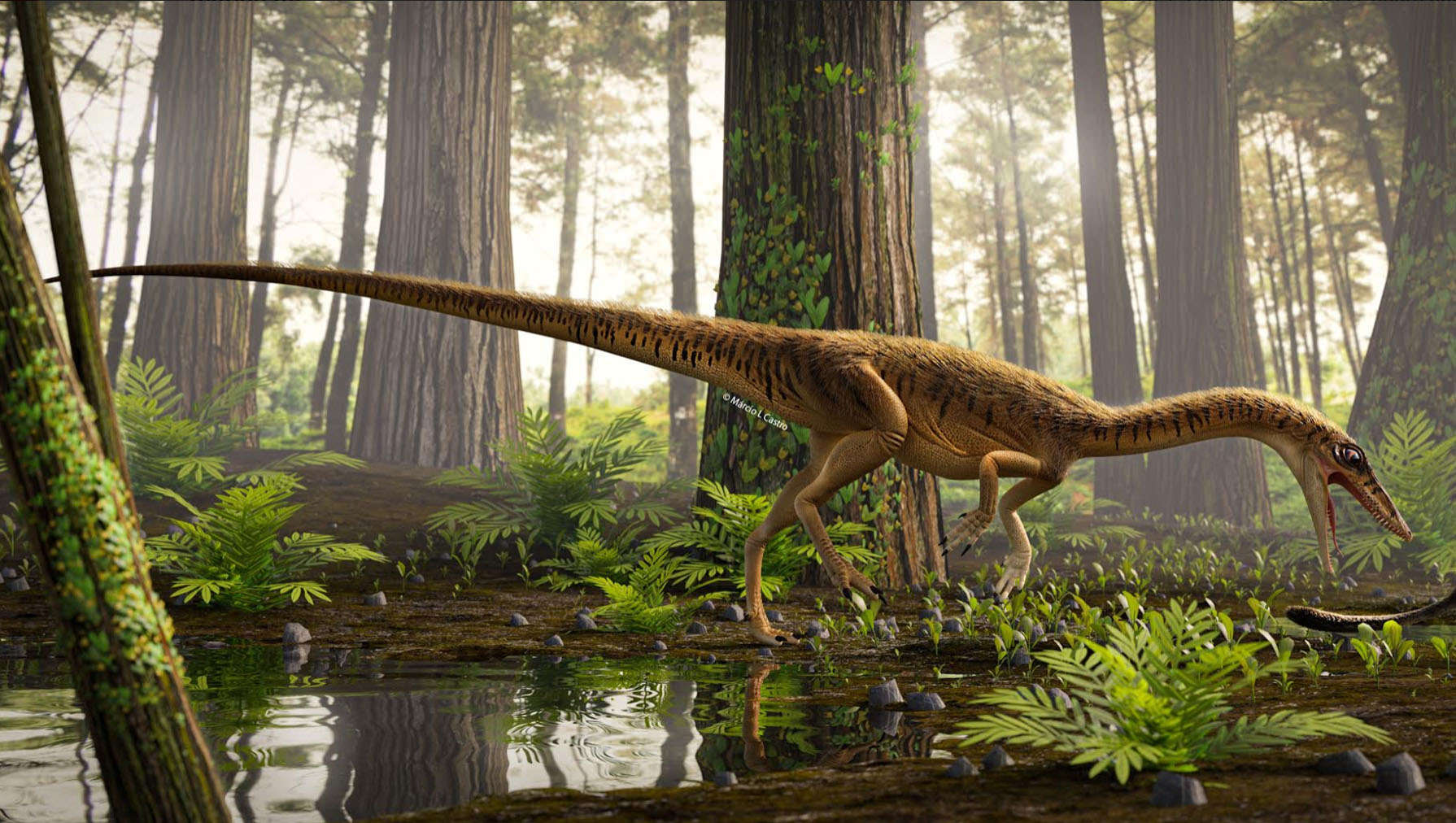
Velociraptor. Spinosaurus. T. Rex. Even the fiercest of theropod dinosaurs, immortalized by both museums and the Jurassic Park franchise, spawned from something much older and slightly less terrifying. Slightly.
Theropods — a lineage whose name literally (and appropriately) translates to “monster foot” — were some of the scariest predators to ever roam the planet, but they had to have spawned from somewhere. Fossilized remains of early theropods are rare. The scarcity of these fossils meant difficulty for scientists who have tried to piece together theropod evolution. That might change now that paleontologist Rodrigo Müller and his research team have unearthed a 230-million-year-old femur from a previously unknown dinosaur that has now been named Erythrovenator jacuiensis.
The creature’s name means “red hunter from the Jacui river” because of the reddish color of the bone, and the “hunter” part speaks for itself because early theropods were carnivores, but how did the team figure out what it probably looked like just from a femur?
"We use closely related dinosaurs whose skeletons were better preserved," said Müller, who led a study recently published in The Journal of South American Earth Sciences. "For instance, we used as model other theropods from Triassic rocks, such as Zupaysaurus and Coelophysis.”
Maybe E. jacuiensis wasn’t able to take down colossal prey like its much more famous descendants would, but its small size, svelte body, and quick legs meant it must have had no problem catching fast food. It surfaced in Brazil from an area that was hiding paleofauna that had eluded scientists until now. What is known as the Niemeyer Site is a totally new fossil-rich layer in which all the preserved animal skeletons, whose bones had been lying there for hundreds of millions of years, were unprecedented finds. Dinosaurs hadn’t quite stepped up to rule the Earth yet at this point. That would happen later, during the Jurassic and Cretaceous periods. Among the other wonders of the site were bones belonging to early mammals, some of which might have been dinner for E. jacuiensis.
The specimen is so intriguing not just for its supposed origin during the dawn of the dinosaurs, but also because its femur (thigh bone) had unusual traits for a Triassic dinosaur. Skeletons can tell us everything from where a certain species lived to how mature it was at the time of death, how similar it was to adjacent species, and how body size evolved within its clade, or group that began with a common ancestor. E. jacuiensis was even related to a Jurassic Park star—that dilophosaurus that infamously clashed with Nedry.
"Some features from the femur resembles more Syntarsus and Dilophosaurus," Müller said. "However, according to the results of the phylogenetic analysis, the new dinosaur is the basalmost member of the theropod lineage. Therefore, it is close related to all the other subsequent theropods instead of a specific one. Nevertheless, this scenario relies on the fragmentary specimen, hence, additional bones can change this hypothesis."
What set this bone apart from other dinosaurs that were emerging during the Upper Triassic was that it had a strange anterior trochanter. This is the bony protuberance near the end of the femur, near the hip bone, which is attached to the thigh muscles. It was this anatomical anomaly that suggested to Müller that he was looking at an entirely new species. It definitely wasn't a sauropod, becuase the bones didn't match up.
Sauropods were the opposite of theropods — think Brontosaurus or Brachiosaurus. These were herbivorous long-necked dinosaurs, many of which evolved to grow to enormous sizes long after E. jacuiensis went extinct, but sometimes ended up in theropod jaws. The difference in femur morphology meant theropods were ruled out. Putting up the fossil femur up against similar bones from other early theropod species, which appeared slightly later, showed that it had characteristics exclusive to theropods. They would keep evolving to be even fiercer.
"Theropods became bigger and widespread across the world after Erythrovenator," said Müller. "Theropods from Argentina, such as Zupaysaurus, which lived some million years after Erythrovenator, were larger, reaching about to 4 meters long, which is two times longer than Erythrovenator. Theropod fossils are unearthed around the world, revealing that theropods were successful during the end of the next Periods."
This was evidence for it being a predator instead of prey. Theropods would eventually branch out into more diverse groups, some of which, like Therizinosaurus, had huge claws but no appetite for flesh. Such dinosaurs wouldn't exist for millions of years. There was no such thing as a herbivorous theropod during the Triassic.
Müller is eager to dig up more about this enigmatic dinosaur.
"The specimen is heavily fragmented. Hence, I’m looking for additional specimens in the Niemeyer Site," he said. "This is a very interesting fossiliferous site and I hope to find more specimens of Erythrovenator in order to verify the previous assumptions, such as their phylogenetic affinities, size and feeding habits."
Maybe E. jacuiensis never rose to Hollywood fame in animatronic form, but the carnivorous dinosaurs that have been cast in movies owe a lot to this prehistoric D-list celebrity.
